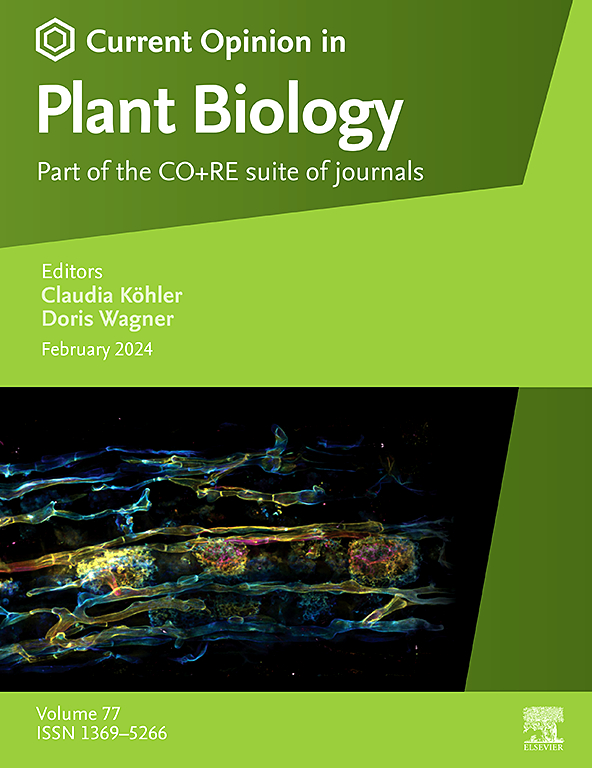Polycomb-group相关组蛋白修饰因子与辅助蛋白在植物进化中的相互作用
IF 7.5
2区 生物学
Q1 PLANT SCIENCES
引用次数: 0
摘要
表观遗传调控因子是一种多蛋白复合物,它通过改变染色质结构来控制基因表达,以响应发育和环境的提示。这些复合物以高度协调的方式发挥作用,经常与各种辅助蛋白合作,精确调节染色质状态的动态性质。然而,我们对这些核心组蛋白修饰调节因子在植物进化过程中如何与辅助蛋白共同进化的理解仍然有限。因此,在这篇综述中,我们总结了主要的组蛋白修饰调节因子的进化,重点介绍了Polycomb基团复合物及其相关的辅助蛋白。我们讨论了辅助蛋白如何进化以调节保守核心成分的活性,支持植物进化过程中的关键创新。最后,我们强调了辅助蛋白在调节组蛋白修饰复合物之间的串扰中的作用,作为塑造表观遗传景观和影响植物发育和环境适应的关键进化因素。本文章由计算机程序翻译,如有差异,请以英文原文为准。
Interplay between Polycomb-group associated histone modifiers and accessory proteins in plant evolution
Epigenetic regulators are multiprotein complexes that modify chromatin architecture to control gene expression in response to developmental and environmental cues. These complexes function in a highly coordinated manner, often collaborating with various accessory proteins to precisely regulate the dynamic nature of chromatin states. However, our understanding of how these core histone-modifying regulators co-evolved with accessory proteins during plant evolution remains limited. Therefore, in this review, we summarize the evolution of major histone modification regulators, with a focus on Polycomb group complexes and their associated accessory proteins. We discuss how accessory proteins have evolved to modulate the activity of conserved core components, supporting key innovations during plant evolution. Lastly, we highlight the role of accessory proteins in mediating crosstalk between histone-modifying complexes, emerging as key evolutionary factors that shape the epigenetic landscape and influence plant development and environmental adaptation.
求助全文
通过发布文献求助,成功后即可免费获取论文全文。
去求助
来源期刊

Current opinion in plant biology
生物-植物科学
CiteScore
16.30
自引率
3.20%
发文量
131
审稿时长
6-12 weeks
期刊介绍:
Current Opinion in Plant Biology builds on Elsevier's reputation for excellence in scientific publishing and long-standing commitment to communicating high quality reproducible research. It is part of the Current Opinion and Research (CO+RE) suite of journals. All CO+RE journals leverage the Current Opinion legacy - of editorial excellence, high-impact, and global reach - to ensure they are a widely read resource that is integral to scientists' workflow.
 求助内容:
求助内容: 应助结果提醒方式:
应助结果提醒方式:


